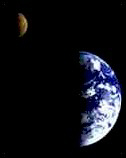The sky sparkled. Rain, each drop a perfect prism to catch the sun’s early rays and transform them into tiny, drifting beacons, illuminated lazy spirals from the stratosphere to earth.
Rain isn’t supposed to act that way. Yes, sometimes when the sun is right, it will catch and form rainbows. Or, when the sky is clear a stray cloud will drop some moisture to commemorate Mr Devil taking a new bride. Rain doesn’t often sparkle, and when it falls, Mr Gravity likes to make the descent quick.
Snow sparkles, but not when it is snowing. Snow comes from dreary skies.
Sparkling rain happens under the rarest of conditions. There can be no clouds. The sun must be shining. The rain drops themselves have to be lighter than down feathers to defeat gravity’s grip. I’ve often heard that it results when two unicorns fall in love, which is quite rare, since the likelihood of finding one unicorn is astronomically small and the chances of two unicorns finding each other is about a third of that.
The real reason for sparkling rain is no more likely, but far more mundane. There’s a factory in northern West Virginia, tucked between to mountain peaks in a pocket-sized valley that manufactures bubbles. Bubbles could be manufactured anywhere, of course, but this out-of-the-way location is ideal for secret research projects.
One of those projects was to use bubbles to encapsulate rain drops in order to transport them from areas with too much rain, like Washington state, to areas that need it more, like southern California. But the experiment was not successful. The rain fell in Seattle; a hundred billion bubbles were released into the air to capture the rain drops. With all those bubbles, some ought to have caught moisture, but they didn’t, or the number was statistically so small as to not make a difference. Then, to further complicate matters, the bubbles did not float to the intended destination. Instead, they dropped onto the countrysides of Wales and Ireland, where the residue of the empty raindrop-sized vessels proved to be excellent fertilizer. So the company scrapped the idea of transporting rain drops by bubble and instead investigated new means of manufacturing and spreading manure.
It’s guessed that around one hundred million of the bubbles never made it to ground, but got caught by the prevailing winds and have created a loose structure that floats high above the temperate zone. The entity is currently calculated to extend over about two cubic miles, although at its density it is invisible to the naked eye. It grows by absorbing moisture. Some of the moisture is later released as sparkling rain while a portion is retained to become part of the floating mass. In this way, the structure is growing, albeit slowly. In twenty years, it is estimated that there will be enough density to be visible by observers on the ground. The guess is that it will appear as a sparkling, fluffy cloud.
The public has been told the unicorn story. Not all believe it, but since there appears to be nothing dangerous in the rain, it’s a good way to keep the population calm until we understand more. If they knew it was man-made rather than a natural occurrence, there would be more clamoring for investigations and the like. It is being studied, of course, but we prefer to stay out of the limelight.
- Log in to post comments
